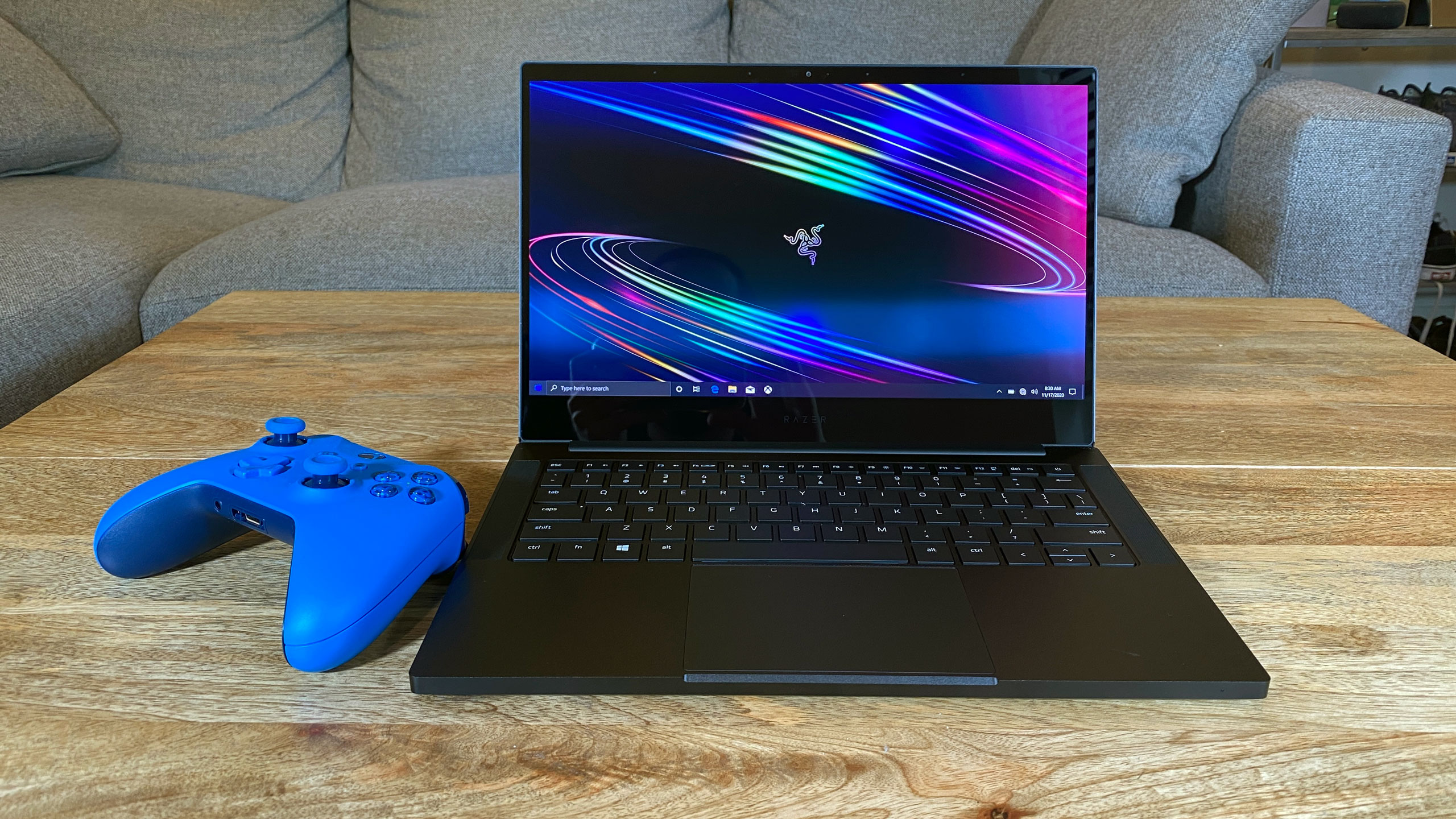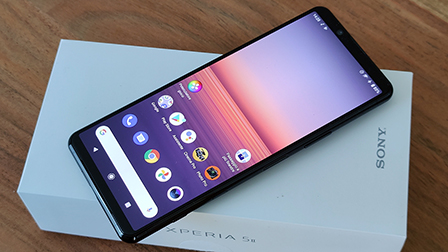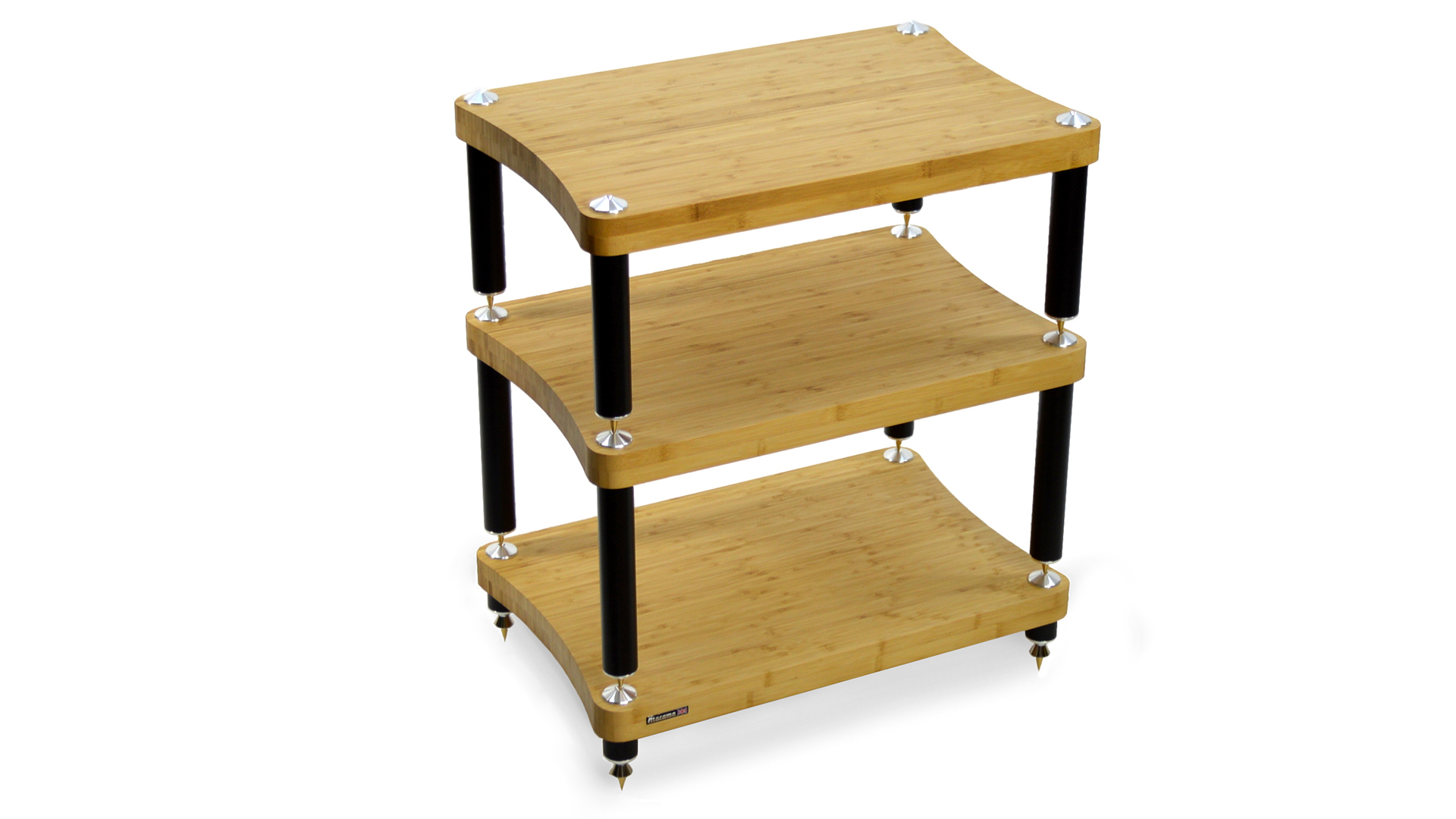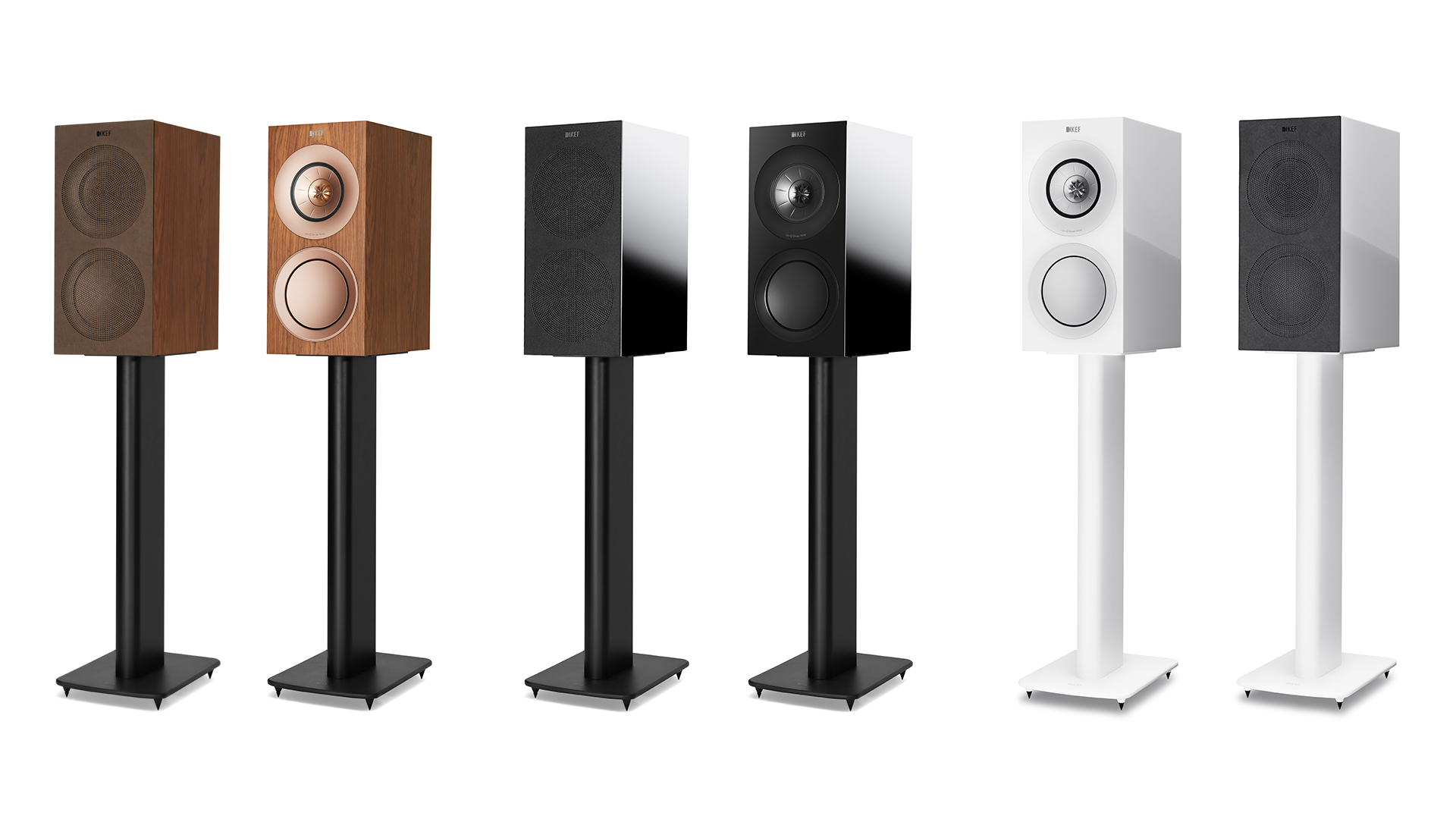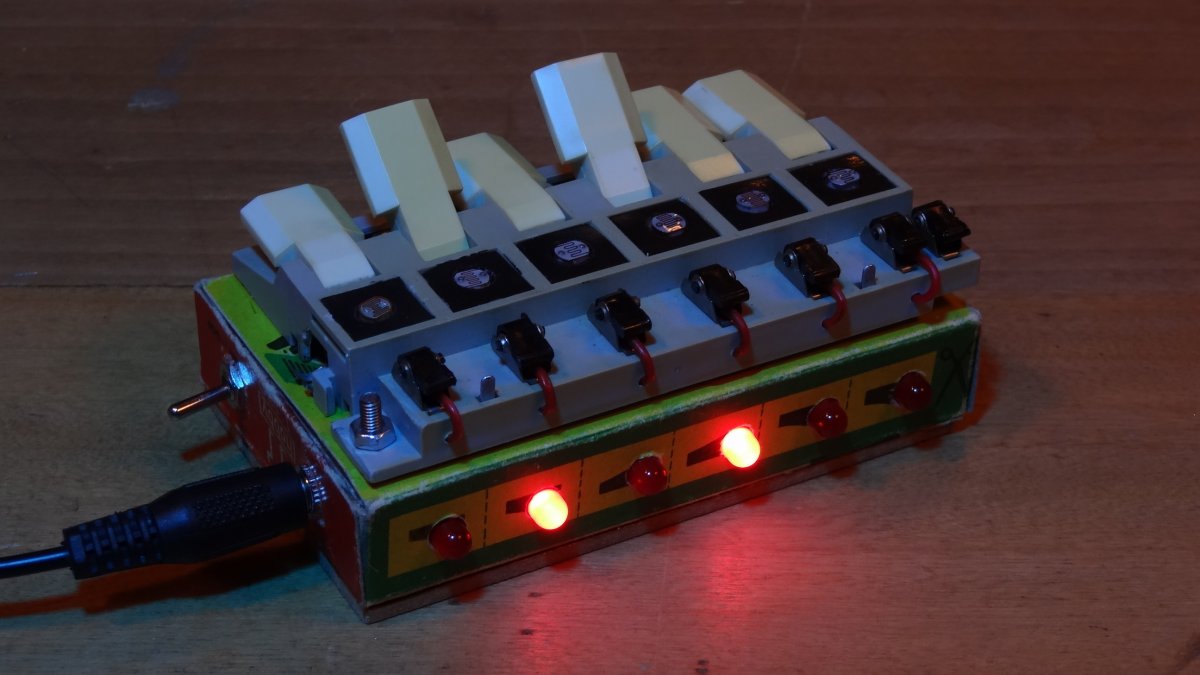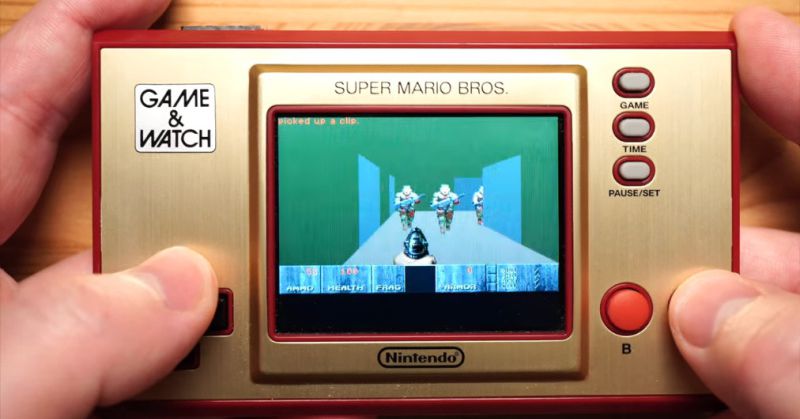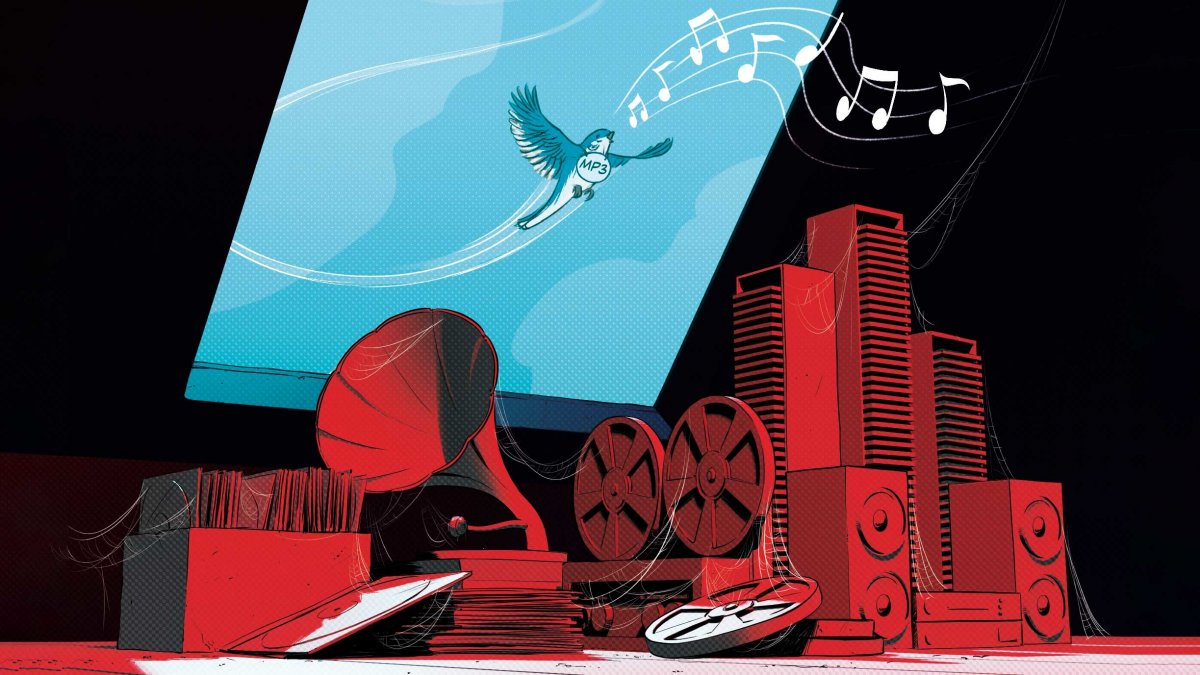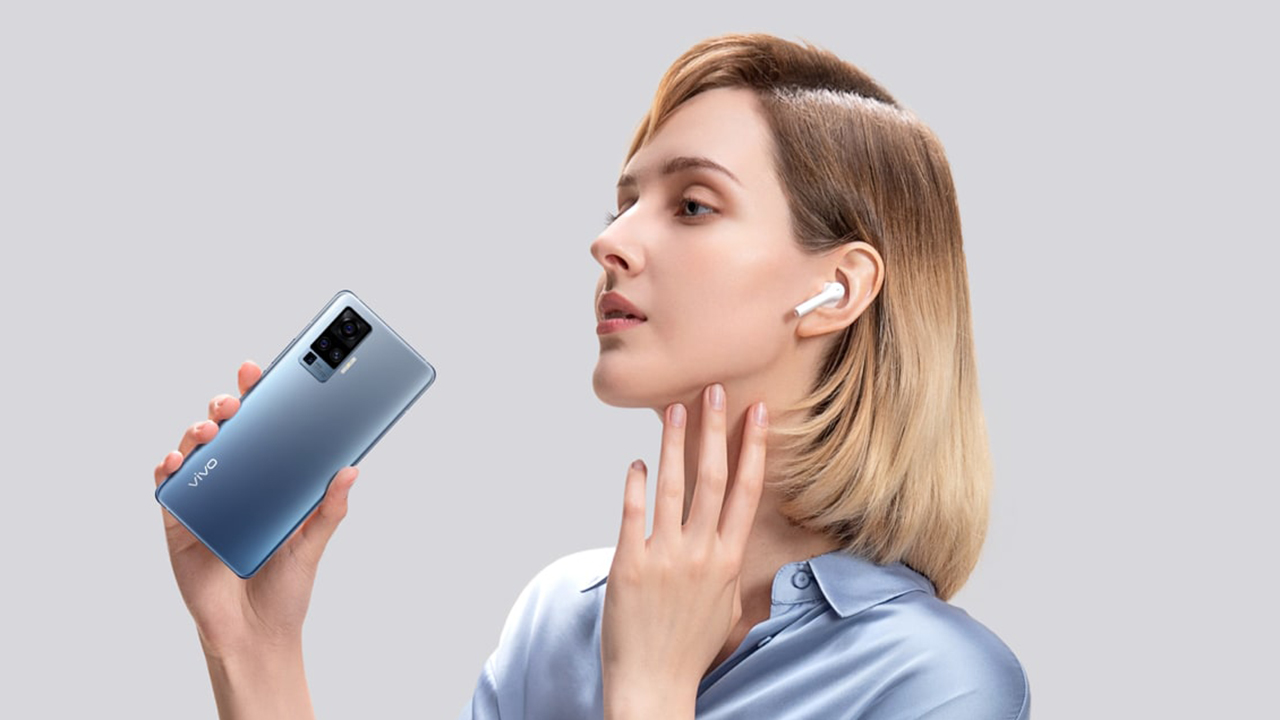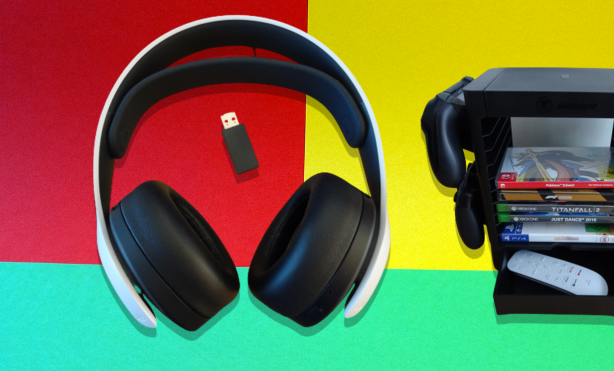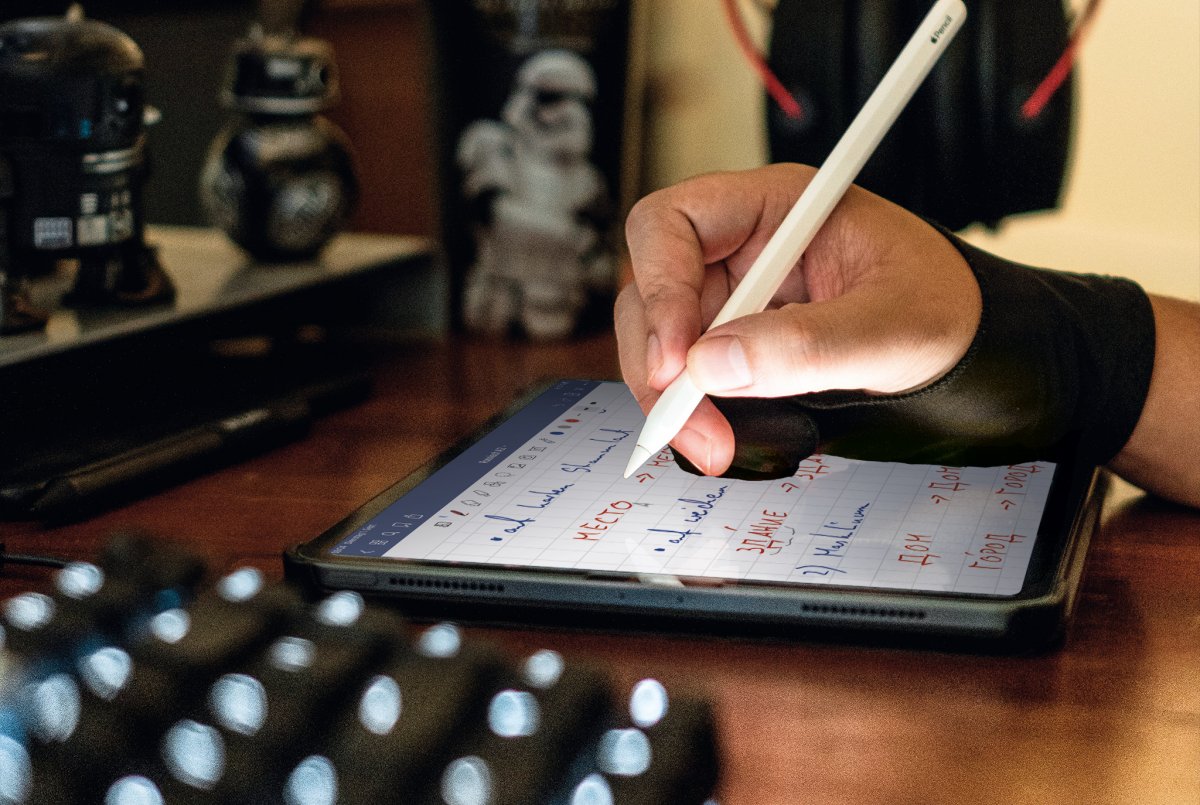If Sony Xperia 1 II were one smartphone aimed at very demanding users in terms of “creativity”, Xperia 5 II is less extreme and aims at a wider audience. Compared to the more expensive model it also has some additional features and the absence of 4K support is not felt that much. Reliability and performance remain, all enhanced by the 120 Hz that was missing on Xperia 1 II. Here is our review.
by Nino Grasso published on 24 November 2020 in the Telephony channel
Sony
We liked Sony Xperia 1 II a lot when we tried it last August. A complete smartphone, with a masterful and perfectly managed 4K display, and two “Pro” modes for taking pictures and shooting videos. All surrounded by powerful hardware and sober and essential software, but at the same time complete and very precise. Among the defects the price and the fact that it is a smartphone designed for very demanding and above all prepared users. Not everyone is able to understand its strengths. The solution could be Sony Xperia 5 II , which we would dare to call the “consumer” version of the Japanese top of the range. In this case the keyword is not only “creativity”, but also “speed”. We tried it and we tell you our impressions on this device.
Article index
- Technical features
- Equipment, prices and availability
- Software and user experience
- Technical analysis
- Benchmark
- Display
- Autonomy
- Camera
- Final considerations
Technical specifications
Sony Xperia 5 II focuses on speed thanks to the Snapdragon 865 , but not only. The Japanese smartphone implements a display from 120 Hz , where the older brother stops at 60 Hz, also adopting a display from 21: 9 as aspect-ratio. The “elongated” form factor typical of Sony flagships therefore remains, a feature that allows an ergonomic and elegant design, but which not everyone might like. Up Xperia 5 II (you can also read here Mark Due) we find a 6.1 “diagonal (therefore smaller than the 6.5” of Xperia 1 II), Full HD + resolution support (2020 x 1080) and compatibility with the HDR standard.
Sony defines the integrated panel as OLED CinemaWide configurable in two modes: Standard and Creator, designed for maximum color accuracy based on to the reference standard used by the media being played. The high refresh rate is instead clearly designed for game lovers and the touch sampling rate is 240 Hz, with Sony promising a gaming experience at the highest levels with Triple A for Android.
This is also thanks to the integrated hardware: Sony Xperia 5 II uses as already mentioned it Snapdragon 865 5G (like Xperia 1 II) with support for sub-6GHz networks (no mmWave, as usual). On the memory side we also find 8GB of RAM and two expandable storage cuts: 128 is 256 GB. The battery is 4. 000 mAh and can be charged with 50% approximately 30 minutes with the supplied PD charger (21 W). This is a nice leap forward compared to the Xperia 5 (which had a 3140 mAh), especially considering that the dimensions remain almost unchanged.
Returning to gaming, we also have software optimizations, such as the Competition Mode (allows you to release the RAM used by the system at that time, hide all notifications, disable adaptive brightness and disable the smartphone keys while gaming) and the option Heat Suppression Power Control , which minimizes throttling during gameplay while the smartphone is charging, in order to always maintain high gaming performance.
The smartphone also allows you to block touches in parts of the screen that are not used i for gameplay purposes, record and share game screenshots with a burst at 20 fps, and there is also an audio mixer to record game audio and voice with different volumes . Sony can also take advantage of its presence in the gaming sector by offering full compatibility with the Sony DualShock 4 controller of PlayStation 4 , and the smartphone can be docked on the joypad with a dedicated holder.
In this way the player can take advantage of the dual speaker stereo audio system, well-finished as on any high-end device from the Japanese manufacturer. The 3.5mm audio jack is present and offers, through dedicated signal routing, the lowest stereo crosstalk in its category. Hi-Res Audio, Hi-Res Audio Wireless and LDAC standards are also supported, and DSEE Ultimate to convert lower quality sources (including streaming) into high resolution. There is no shortage of Dolby Atmos and 257 Reality Audio with integrated hardware decoder.
| OS (at launch) |
Android 10
|
Android 10
|
| Processor |
Qualcomm Snapdragon 865 a 7-nm
1 x Kryo 585 @ 2,84 GHz
3 x Kryo 585 @ 2,42 GHz
4 x Kryo 585 @ 1, 80 GHz
|
| Memories |
8 GB of RAM
128 – 256 GB Expandable via microSD
|
8 GB of RAM
256 GB Expandable via microSD
|
| Display |
6.1 “OLED (21: 9)
2520 x 1080 px (449 PPI)
120 Hz HDR BT. 2020
|
6.5 “OLED (21: 9)
3840 x 1644 px (643 PPI)
HDR – BT. 2020
|
| Cameras |
Back:
Normal (24 mm): 12 MP f / 1.7 Dual Pixel OIS
Ultra-wide (0013 mm): 12 MP f / 2.4 Dual Pixel
Tele 3x (70 mm): 12 MP f / 2.2 Dual Pixel OIS
Ultra HD HDR Video @ 84 fps
Front:
Normal: 8 MP f / 2.0
|
Back :
Normal (24 mm): 12 MP f / 1.7 Dual Pixel OIS
Ultra-wide (16 mm): 12 MP f / 2.4 Dual Pixel
Tele 3x (70 mm): 12 MP f / 2.2 Dual Pixel OIS
ToF 3D: 0.3M
Ultra HD HDR Video @ 60 fps
Front :
Normal: 8 MP f / 2.0
|
| Extra |
4G LTE-A Cat. 18 (1200 / 150 Mbps)
Wi-Fi 6 2.4-5GHz
Bluetooth 5.1
NFC
Optional Dual SIM (Nano)
Side fingerprint sensor
DAC 24-bit/192 kHz
Dolby Atmos
|
4G LTE-A Cat. 19 (1600 / 120 Mbps)
Wi-Fi 6 2.4-5GHz
Bluetooth 5.1
NFC
Optional Dual SIM (Nano)
Side fingerprint sensor
DAC 24-bit/192 kHz
Dolby Atmos
|
| Doors |
USB Type-C
NO 3.5 mm audio jack
|
USB Type-C
NO 3.5 mm audio jack
|
| Battery |
4. 000 mAh
PD Quick Charge 21 W
|
4. 000 mAh
Quick Charge PD 21 W
Reverse wireless charging 11 W
|
| Dimensions |
158 x 68 x 8 mm
|
165, 1 x 71, 1 x 7.6 mm
|
| Weight |
163 grams
|
181 grams
|
Three rear cameras , arranged in a vertical module e , as on Xperia 1 II, they all use sensors from 11 MP. The main has an equivalent focal length of 24 mm and an OIS stabilized lens with an f / 1.7 aperture. Comes with an ultra wide angle lens from 16 mm with aperture f / 2.6 and a canvas of 70 mm with f / 2.4 aperture, also with OIS optical stabilization. The cameras use Zeiss lenses and can calculate exposure and focus 60 times per second, with maximum burst support 20 fps.
Sony Xperia 5 II has some very interesting numbers to show such as the size of the main module’s Exmor RS sensor, from 1 / 1.7 “ and much larger than that of its predecessor (1 / 2.6 “). This, together with the integrated BionzX for mobile processor and an improved RAW + JPG shooting mode, should lead to brighter, less noise photographs. Individual sensor pixels are 1.8μm large (on Xperia 5 they were 0.8μm), with Sony Xperia 5 II only using 10 ms from taking the shot to saving the photo.
There is no lack of support for the “Foto Pro” apps and “Cinema Pro”, designed for the most demanding users. The smarpthone can also record in 4K at 120 fps in slow-motion with HDR, with apps that allow you to manually set any setting. Among the noteworthy features we also have a dedicated shutter button , and a button for launch the Google Assistant . Android 10 is natively pre-installed.
Sony Xperia 5 II: prices and equipment
Xperia 5 II is available in Italy in black, blue and gray and the price is much more interesting than the big brother: 899 ??. The original equipment is quite sparse, since it only includes charger and cable, however those who buy the smartphone by 30 November 2020 gets bundled i Sony WF – 865 XM3 , true wireless earphones with active noise cancellation with excellent audio quality.
- Sony Xperia 5 II : 899, 00 ??
Considering the technical features of this device and attention to detail, in addition to the sober and top quality design, we believe the outlay requested by Sony is extremely competitive. The purchase can be made through the official e-store.
Software and user experience
The experience of Sony Xperia 5 II very closely resembles that of Xperia 1 II, so here too we find ourselves with a top-of-the-range performance, free of lag, jamming or waiting for no reason. Here everything is embellished with the possibility of activating the update frequency at 120 Hz which allows for smoother animations and overall more enjoyable experience? At what cost? During our tests we found a slightly higher power consumption, but not such a noticeable impact. The day can be completed without problems both at 60 Hz both at 120 Hz.
The Japanese smartphone is fast and responsive and helps the little customized Android version. Few additional functions, such as the sidebar natively integrated on the operating system: compared to the first implementations on previous Sony smartphones, it is now much less difficult to activate it, however we would not miss it if it were eliminated completely. This is to allow the user to give the most frequent actions with one hand: it is accessed with a double tap on the edges of the display, but it probably takes less time to search for the desired functions or apps on the Home or in the typical quick commands of Android.
The smartphone also implements a “Game enhancer” function, which has been translated into Italian with “Game enhancer” : used to inhibit notifications, to search online for suggestions on the gameplay of various titles, or even to record game sessions in order to share them with friends and contacts. Gaming side Sony Xperia 5 II also offers support for Sony’s DualShock 4 , which can thus be used to play Android titles.
There are few apps pre-installed on the device, just as the Settings do not have great customization possibilities (which is not necessarily bad). However, the user can go into detail with the display settings , while the whole multimedia creation experience is based on the two pre-installed apps, Cinema Pro and Foto Pro , which we will discuss in the chapter dedicated to the camera.
Excellent l ‘ergonomics also thanks to the weight of only 163 grams, while the side fingerprint sensor is easily accessible and allows you to unlock your smartphone in an instant. The bezels above and below the display are quite evident compared to the “frame-less” fashion of the moment, however in our opinion they are not a problem. Aesthetically, the Xperia 5 II, just like its older brother, is one of the most successful devices of the 2020.
I 21: 9 clearly help to make the smartphone usable at all times, however – despite the integrated functions – it is quite inconvenient use with one hand (which is now true for almost all smartphones on the market). The elongated format on paper can give satisfactions, but it must always be kept in mind that the vast majority of the Google Play Store apps are designed for the most common formats.
Small consideration more technical: i 21: 9 of the display can all too often represent a compromise in use of multimedia contents , especially online where they are presented in the vast majority of cases in 16: 9. Panorama format films are an exception, but even in this case the exact format is 2, 39: 1 (the CinemaScope is instead in 2. 35: 1 ). That of Xperia 5 II can be approximated in 2, 30: 1 therefore it is practically impossible to see a content without black bands, more or less large, or to cut a portion of the image.
Star Wars: Episode IX – The Rise of Skywalker
Format 2, 39: 1 – Small black bands above and below
Good viewing experience
Video on YouTube
Format 1, 78: 1 (16: 9) – Huge black bands on the sides
I 21: 9 are not comfortable even in photography, so they can be mainly justified with the creation of contents on device through the dedicated apps and their display.
Xperia 5 II is then equipped with the technology Dolby Atmos both with headphones and when listening with the integrated speakers. By activating the function, the sound gains volume, detail and spatiality, even and above all when listening through the two integrated front-facing stereo speakers. For headphone lovers, the 3.5mm jack, absent on the predecessor, makes a great return. Finally, an “old style” vibration motor should be noted, which gives an effect that is not very pleasant to the touch.
Technical analysis
Xperia 5 II uses the same Qualcomm Snapdragon processor 865 that we find on Xperia 1 II, a processor that is no longer very recent but still extremely valid, representing one of the best solutions for Android devices to date ( find here our in-depth analysis). The CPU part offers a maximum operating frequency of 2, 78 GHz for the main core, while we have two other clusters, always with Kryo core 585, three and four cores at lower frequencies. The GPU is an Adreno 650, while on the memory side we have LPDDR5 RAM for RAM (8GB) and UFS 3.0 chip for storage. On the archiving side there are two versions for sale, one from 93 GB and the other – as the top of the range – from 256 GB , both with the possibility of expansion via microSD to be purchased separately.
Performance offered by the Sony smartphone are absolutely very high, even if from the benchmarks it is possible to deduce a slightly conservative management especially of the graphics section, just as it happened with Xperia 1 II. During our tests, the smartphone did not give any signs of excessive overheating, becoming lukewarm at most during demanding sessions on the computational level.
Benchmark
Below are the benchmarks we performed with the terminal .
Display
Sony Xperia 5 II uses a more “normal” panel than Xperia 1 II, but still valid also on the front of the definition. In fact, in practical use there are no huge differences between the 4K of the top of the range and the Full HD + of this device (equal to 2520 x 1080 pixels), while the 84 Hz that the Xperia 5 II can pull off. The management of the update frequency is up to the software, which establishes on which apps to keep the maximum value and on which instead it is convenient to fall back on 60 Hz. The touch sampling rate is 192 Hz, and in fact it is definitely reactive with the scrolling animation that perfectly follows the movement of the finger.
As happens on all Sony top-of-the-range, the panel can be managed in a capillary manner through the integrated “standard” settings, with simple commands to understand especially for more technical users. For example, you can change the White Balance by choosing between three presets (warm, medium, cold), or by customizing the three primary components via three separate sliders or by choosing the preferred temperature for white also on the basis of the various standards (D 50, D 55, D 61, D 65, until93) .
The management of the content being played resembles that found on Apple iPhones: the smartphone extends or not the color gamut based on the color profile of the displayed content. Two modes are user configurable: Creation , which aims to provide a reproduction that is as faithful as possible; Standard , which instead blocks the chromatic extension “for brighter and more intense color effects”. However, both refer to the profile color of the file being played, with Creation trying to be as close as possible to the reference (be it, for example, DCI-P3 or sRGB, extending or not the covered gamut triangle); while Standard aims to provide more saturated colors even going beyond DCI-P3 or sRGB, with a gamut triangle that is always slightly wider than the reference.
With the Standard mode you can choose whether to enable the Creation Mode dynamically when opening certain apps (in order to have the “wow” effect of the Standard Mode with some, and the chromatic precision of the Creation Mode with others), or enable the Video image enhancement which uses integrated technology X1 for mobile , so as to transform into HDR also content with SDR encoding.
Analysis Display
Creation Mode
Gamut
White Balance
Gamma curve
Color Fidelity (DCI-P3)
Standard Mode
Gamut
White balance
Gamma curve
Color Fidelity (DCI- P3)
HDR playback
Gamut
White Balance
Gamma Curve
Color Fidelity (DCI-P3 HDR SMPTE 2084)
The maximum luminance of the display is 778 cd / m² with an APL of 15% on HDR content, 645 cd / m² with SDR content, sufficient but not a lot for example under the sunlight. The contrast ratio is optimal, thanks to the presence of an OLED that can turn off the pixels to “reproduce” the black, and also in terms of color we are faced with excellent values. The display of Sony Xperia 5 II is, in this area, among the best in the entire category.
The analysis of The fidelity of primary and complementary colors at maximum saturation shows how the Creation mode is more precise in all cases even without manual calibration compared to Standard mode. Xperia 5 II, as already mentioned, restricts the playback gamut in the presence of SDR content, while activating material with content saved with more extended profiles or HDR brings the maximum saturation of the various color components up to the DCI-P3 standard. Both in SDR and HDR we find ourselves with a color temperature close to the reference, with a white point only slightly shifted towards cold shades. Manual calibration is still very simple, even by choosing a hottest preset among the many available basic settings in the device Settings.
Color fidelity is excellent in Creation mode , both with SDR content (DeltaE = 3.7, good ) and HDR (DeltaE = 2.4, excellent). The gamma is also very correct (apart from some small inaccuracy in the highlights in SDR), in Creation Mode, with both SDR and HDR content. In the first case we have an average range of about 2.3 (the reference value is 2.4), with a linear trend on all white levels. The behavior with HDR content is even better, where the reference is followed up to a white level of 75%, when you start to manifest the clipping that stops the maximum luminance from the 75% onwards to a value of approximately 780 nit (very high, although not at the top of the category).
Autonomy
Smaller display and lower resolution are good for the ‘operating autonomy of Xperia 5 II compared to Xperia 1 II. The differences are not striking, but certainly there are compared to the flagship, while the situation appears more balanced when the 120 Hz. In our test (which we made at 60 Hz), we got a decidedly decent result for Sony Xperia 5 II, in the category average: 810 minutes , over an hour more than the big brother.
The test was carried out by running an automated script that simulates human interaction with different web pages, after setting the brightness of the display at the value of 200 nit. Here are the comparisons with other relevant smartphones.
Camera
The photographic sector of Sony Xperia 5 II is very similar to that of the older brother, with all the sensors of the rear module that can shoot up to a resolution of 12 Mpixel. The only difference between the two models is the absence of the ToF 3D module for the analysis on the depth of the pixels. There are three shooting modes: wide angle with focal length of 24 mm equivalent in the format from 35 mm, with an aperture of f / 1.7; ultra wide angle with focal length of 16 mm; and finally canvases from 70 mm equivalent.
Both the main sensor and the telephoto sensor are optically stabilized, a feature that can be used in both photos and videos. It is very interesting, in fact, the possibility of exploiting all the modules, even the optical zoom and the ultra wide angle, for recording videos by dynamically switching from one to the other. All modules can then also shoot in RAW mode.
Sony Xperia 5 II, features camera
- Standard
- Sensor from 12 MP
- Lens f / 1.7 OIS
- Dual Pixel Autofocus
- Length focal 24 mm equivalent
- Ultra-wide
- Sensor from 12 MP
- Lens f / 2.4
- Dual Pixel Autofocus
- Focal length 16 mm equivalent
- Zoom 3x
- Sensor from 12 MP
- Lens f / 2.4 OIS
- Autofocus PDAF
- Focal length 65 mm equivalent
- Video 4K Ultra HD HDR @ 120 fps
Besides Cinema Pro , the application dedicated to manual video recording that we had already seen with the previous generation, sau Xperia 5 II is also natively installed Photo Pro , which it works in a similar way to the first but is dedicated to taking pictures. Several smartphones allow you to manually set values such as exposure, focus or white balance, and there are a myriad of applications on the App Store or Google Play Store that allow you to gain fully manual control in taking photos and recording videos.
Sony Xperia 5 II implementation is native, though, and allows for a more reliable approach in setting the various modes. Compared to Cinema Pro , however, Photo Pro does not add much to the smartphone usage experience . While it is true that it brings the interface of Sony digital cameras to the smartphone, it is also true that those interfaces were born and designed on very different devices. In short, the standard point and click interfaces are more effective and easier to use, in many ways, and the ability to manually set the focus on a smartphone can only help in very special cases.
The Photo Pro interface allows you to set different shooting modes through a dial, like on digital cameras, between AUTO, P (Program), S (shutter priority) and M (fully manual). You can then access a menu where you can set the various settings in a more intuitive way for the inexperienced user or activate the level and histogram. The user can choose to use the three different modules for shooting and access a bar that offers all the chosen shooting settings, including shutter speed, aperture, exposure and ISO. On the right side of the screen there is also a panel for quick access to all functions.
This is a professional approach to photography, which on a smartphone is a little out of place. above all because point and shoot is often preferred, or in any case simplified interfaces that highlight the characteristics of sensors and lenses typical of smartphones.
More useful in our opinion the “old” Cinema Pro , which now also allows you to record to 120 fps at 4K resolution (on Xperia 1 II we stopped at 60 fps) and to set all the recording options manually and with a dedicated interface. More useful on a video is the ability to lock white balance, stop autofocus by setting it to different modes, and choose a shutter. Here too, however, the same considerations can be made: it is difficult to use a smartphone for professional purposes, with the videos recorded with the mobile device that are mainly used for quick sharing.
In case on the contrary, if you often find yourself recording complex videos with your smartphone to be edited later on the computer or with dedicated apps, the Cinema Pro app can guarantee very interesting results by simplifying post-production and editing itself, albeit with all limits of sensors and lenses installed on the smartphone.
Sony Xperia 5 II shot examples
Click on the thumbnails to see the original photos
Main
Ultra-wide
Zoom 3x
Main in the dark
Main in the dark with flash
The camera of Sony Xperia 5 II offers good quality shots in all conditions, with the zoom from 70 mm which manages to offer excellent detail even in intermediate light conditions, indoors. The smartphone manages to be very incisive even in the most difficult shots, thanks to the (automatic) activation of a long exposure mode with merging of several shots to obtain a single photo rich in detail and with true colors. The secondary modules are also of high quality, with the ultra wide angle that manages to generate a good level of detail under the sunlight, without excelling compared to other products of the same market segment.
Main
Ultra-wide
Zoom 3x
Main
Zoom 3x
Main al dark
Main in the dark with flash
Final considerations
Sony does not aim at the sales volumes of Samsung or Huawei, however if everything were to play on the quality of the product it would have nothing to envy to the two market leaders. Sony Xperia 5 II confirms all the quality of Xperia 1 II that we had tried with great satisfaction, and adds the 120 Hz, a more compact form factor (perhaps too much, considering the 21: 9) and an even greater focus on fluidity and speed in general with support for slow-motion videos at 84 fps also in 4K Ultra HD with HDR.
Xperia 5 II is in our opinion the best Sony smartphone of the 2020, also in virtue of the significantly higher quality / price ratio than the absolute top of the range (which costs 1200 ??, we remember). Compared to the latter, it lacks support for reverse charging, but it is a deficiency that is hardly felt in everyday use (except for sporadic emergencies).
It is an excellent smartphone in absolute and can be a great buy for those who want to stand out from the crowd. It is in fact a smartphone for more savvy than average users : not everyone can understand its merits, and its peculiarities require experience in the corresponding sectors.
It goes without saying that an app like Cinema Pro or the ability to balance the colors of the display based on the temperature of the white they are not for everyone, whereas other competitors grind huge numbers so that with one or two taps you get more than satisfactory results. The problem is that sometimes the competitive results are very similar to those obtainable with the Xperia 5 II or even better, all with half the effort.
PRO
- Great display at 120 Hz
- Excellent performance
- Photo Pro and Cinema Pro
- Features aimed at PlayStation fans
VERSUS
- Some features for expert users only
- In some cases i 21: 9 represent a problem

